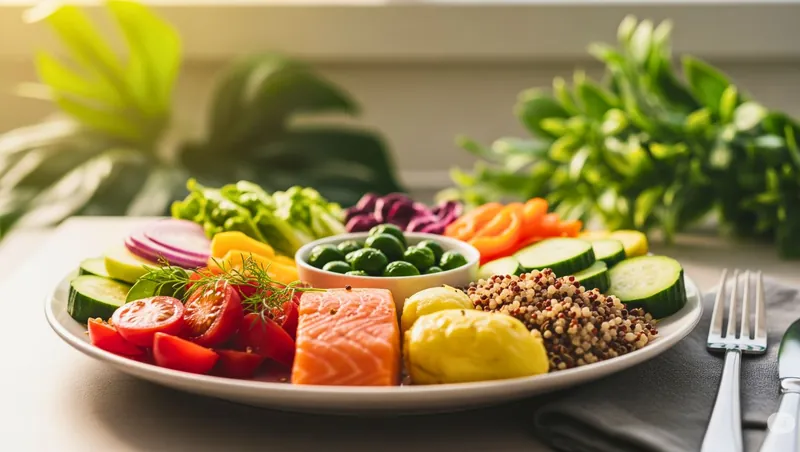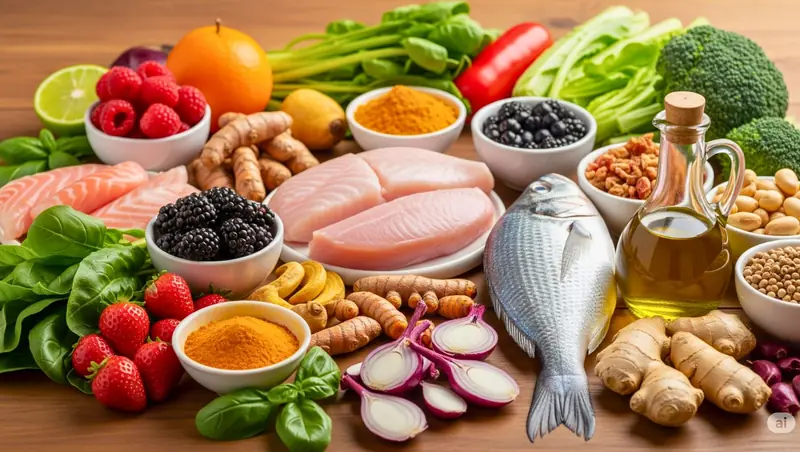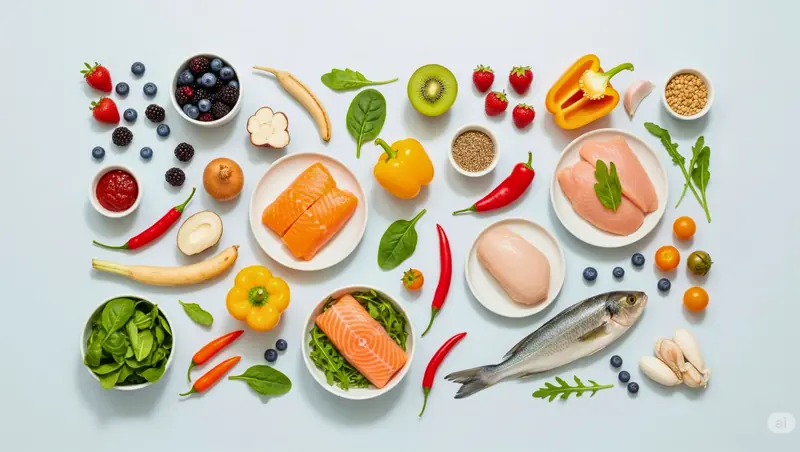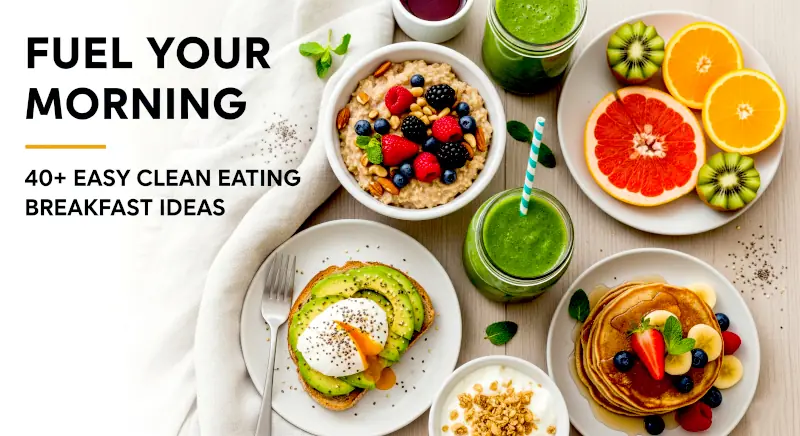Your body has an amazing ability to heal and protect itself. When you get a cut or catch a cold, you might notice some redness, swelling, pain, or warmth. That’s your body’s way of fighting off harm and starting to fix things. This is called acute inflammation, and it’s a normal and important part of staying healthy.

But what happens when this helpful response sticks around for too long, even when there’s no immediate danger? This is known as chronic, systemic inflammation, and it’s a big deal for your health. Unlike the short-term kind, chronic inflammation can last for months or even years, quietly affecting your whole body. It’s like a low-level fire burning inside you. Over time, it can contribute to serious health concerns such as obesity, type 2 diabetes, heart disease, certain cancers, arthritis, Alzheimer’s disease, and even some autoimmune conditions.
The good news is that you have a powerful tool to help manage this internal fire: your diet. What you choose to eat each day can either fuel inflammation or help put it out. This article will guide you through the exciting world of an anti-inflammatory diet meal plan and show you how simple changes in your eating habits can make a big difference in how you feel, helping you on a journey to better health and well-being.
Understanding Inflammation and Its Connection to Your Health

To truly appreciate the power of an anti-inflammatory diet, it’s helpful to understand a bit more about chronic inflammation. Imagine your body’s immune system as a loyal guard dog. When a stranger (like a germ or an injury) shows up, the dog barks loudly to alert everyone and keep you safe. That’s acute inflammation doing its job. But if the dog keeps barking all the time, even when there’s no one there, it becomes a nuisance and can even damage the house. That’s chronic inflammation.
This persistent, low-level inflammation can be triggered by many things, such as ongoing stress, not moving your body enough, or exposure to certain things in the environment. But a major player in this ongoing inflammation is often what you eat.
When chronic inflammation is present, it can play a role in the development and progression of various non-communicable diseases. For instance:
- Heart Disease: Chronic inflammation can damage the walls of your blood vessels, making them less flexible and increasing your risk of heart problems.
- Type 2 Diabetes: Inflammation can contribute to insulin resistance, making it harder for your body to manage blood sugar levels.
- Certain Cancers: Unchecked inflammation can create an environment where unhealthy cells are more likely to grow and spread.
- Arthritis: Many forms of arthritis, like rheumatoid arthritis, are marked by chronic inflammation that attacks the joints, causing pain and swelling.
- Alzheimer’s Disease and Cognitive Decline: Inflammation can affect brain health and may increase the risk of memory problems and cognitive decline as you age.
- Metabolic Syndrome: This is a cluster of conditions that increase your risk of heart disease and diabetes, and inflammation is often a key part of it.
Fortunately, you have the power to make changes that can influence this internal process. By focusing on foods that reduce inflammation in your meals, you can help your body get back in balance and potentially lower your risk for these conditions.
What is an Anti-Inflammatory Diet?

An anti-inflammatory diet isn’t about following strict rules or counting every single calorie. Instead, it’s about choosing a holistic eating pattern that centers around whole, unprocessed foods and limits those that tend to fuel inflammation. Think of it as a way of eating that supports your body’s natural ability to heal and protect itself.
This way of eating focuses on:
- Healthy Fats: Especially those rich in Omega-3 fatty acids and monounsaturated fats.
- Nutrient-Dense Foods: These are foods packed with vitamins, minerals, and other beneficial compounds.
- Complex Carbohydrates: Foods that provide steady energy and are rich in fiber.
- Legumes: A fantastic source of protein and fiber.
- Plenty of Fruits and Vegetables: Especially those with vibrant colors, which are often packed with antioxidants.
On the flip side, an anti-inflammatory diet significantly cuts down on:
- Processed Foods: Items that have been heavily changed from their natural state, often with added chemicals and preservatives.
- Excess Added Sugars: Hidden in many everyday foods and drinks.
- Refined Grains: Like white bread and white flour, which can cause quick spikes in blood sugar.
- Red and Processed Meats: These are typically limited or consumed in very small amounts.
You might find that many popular healthy eating plans, such as the Mediterranean diet and the DASH diet, naturally fit the bill as anti-inflammatory approaches. These diets emphasize many of the same core principles, focusing on fresh, whole ingredients to support overall health and reduce inflammation.
Powerhouse Anti-Inflammatory Foods
Let’s dive into the delicious anti-inflammatory foods that can become the heroes of your plate. These are the foods that fight inflammation by providing essential nutrients and compounds that help your body function at its best.
Fruits and Vegetables: Nature’s Antioxidants
These vibrant foods are the cornerstone of any low-inflammation food plan. They are bursting with antioxidants (like vitamins A, C, E, and K), polyphenols, and other plant-based compounds that work to protect your cells and reduce inflammation. Aim to make fruits and vegetables about half of your plate at meals.
Some top choices include:
- Berries: Blueberries, strawberries, raspberries, and blackberries are rich in anthocyanins, powerful antioxidants that help calm inflammation.
- Cherries and Pomegranate: Also high in anthocyanins and other antioxidants.
- Dark Leafy Greens: Spinach, kale, and chard are packed with vitamins and anti-inflammatory compounds.
- Cruciferous Vegetables: Broccoli, cauliflower, and Brussels sprouts contain sulforaphane, an antioxidant that decreases inflammation.
- Bell Peppers: A fantastic source of vitamin C and quercetin, which have strong anti-inflammatory effects.
- Tomatoes: Rich in lycopene, an antioxidant with impressive anti-inflammatory properties. Cooking tomatoes with a little healthy fat (like olive oil) can help your body absorb more of this nutrient.
- Sweet Potatoes and Carrots: Provide beta-carotene and are excellent anti-inflammatory vegetables.
- Avocados: Contain heart-healthy fats, carotenoids, and tocopherols that help reduce inflammation.
Healthy Fats: Your Body’s Smoother Operators
Not all fats are created equal. The right fats are crucial for an anti-inflammatory diet meal plan, especially omega-3 fatty acids and monounsaturated fats. These fats can help reduce inflammatory molecules in your body.
Look to include:
- Fatty Fish: Salmon, sardines, mackerel, herring, and tuna are excellent sources of long-chain omega-3 fatty acids (EPA and DHA). Aim for at least two servings per week.
- Extra Virgin Olive Oil: A staple of the Mediterranean diet, it’s rich in monounsaturated fats and polyphenols with antioxidant and anti-inflammatory properties.
- Nuts and Seeds: Walnuts, almonds, pistachios, chia seeds, and flaxseeds offer fiber, antioxidants, and omega-3s, helping to lower inflammation and keep you feeling full. Natural nut butters are also a great choice.
- Avocado Oil, Walnut Oil, Flax Oil: These are good cooking oils with beneficial fatty acid profiles.
Lean Proteins and Legumes: Building Blocks for Health
Protein is essential for your body’s functions, and choosing the right sources can support your anti-inflammatory goals.
- Legumes: Lentils, chickpeas, black beans, kidney beans, and edamame are powerhouses of fiber and plant-based protein, which can help reduce insulin resistance and inflammation.
- Eggs: A good source of protein.
- Lean Poultry: Skinless chicken breast, thighs, or legs can be enjoyed in moderation.
- White Fish and Shellfish: Excellent lean protein options.
- Tofu and Tempeh: Plant-based protein sources derived from soybeans.
Whole Grains: Fiber-Rich Fuel
Choosing whole grains over refined grains is a key step in an anti-inflammatory diet meal plan because they are high in fiber, B vitamins, and antioxidants. Fiber is particularly important as it supports healthy gut bacteria, which can help suppress inflammation.
Good choices include:
- Whole-wheat bread and pasta.
- Quinoa.
- Oats.
- Brown rice.
- Barley and Farro.
Herbs and Spices: Flavorful Fighters
Don’t underestimate the power of your spice rack! Many herbs and spices are packed with phytochemicals that offer significant antioxidant and anti-inflammatory properties.
Incorporate these into your anti-inflammatory meals:
- Turmeric: Contains curcumin, a powerful anti-inflammatory compound.
- Ginger: Known for its anti-inflammatory effects.
- Garlic, Cinnamon, Cayenne, Oregano, Basil, Rosemary, Sage, and Thyme: All contain beneficial compounds.
Gut-Healthy Foods: Your Inner Balance
A healthy gut is strongly linked to a healthy immune system and lower inflammation. About 70-80% of your immune cells reside in your gut, so taking care of your gut health is vital.
- Fermented Dairy: Organic plain Greek yogurt and kefir contain live bacteria (probiotics) that contribute to healthy gut flora.
- Prebiotic-Rich Foods: Dietary fiber found in fruits, vegetables, and legumes acts as food for beneficial gut bacteria.
Foods to Limit (The Inflammatory Culprits)

Just as important as adding anti-inflammatory foods is reducing your intake of foods that can trigger or worsen inflammation. Think of these as the “inflammatory culprits” that can stir up trouble in your body.
Here are the types of foods that cause inflammation that experts recommend limiting:
- Added Sugars and Sugar-Sweetened Beverages: This includes things like candy, pastries, sodas, and even hidden sugars in salad dressings or condiments. Excess sugar contributes to inflammation and is linked to obesity, diabetes, and heart disease. Sugars found naturally in whole fruits and dairy, however, are fine because they come with important nutrients.
- Processed Meats: Foods like bacon, hot dogs, pepperoni, and lunch meats are often high in salt, synthetic nitrates, and saturated fat, all of which can increase inflammation. The best advice is to limit these overall.
- Highly Processed Foods: These are convenient, but they often contain artificial colors, flavorings, and preservatives not naturally found in food. These ingredients can irritate your body and trigger inflammation. A good rule of thumb: if the ingredient list is long and full of words you don’t recognize, it’s likely highly processed.
- Refined Carbohydrates: White bread, white pasta, white rice, and crackers are examples of refined carbs. They cause blood sugar to rise quickly and can contribute to inflammation, especially when they are low in fiber.
- Too Many Omega-6 Fatty Acids (and Not Enough Omega-3s): While some omega-6s are necessary, most modern diets have too many, often from vegetable oils like corn, soybean, and sunflower, found in ultra-processed foods. This imbalance can lead to low-grade inflammation.
- Trans Fats: These artificial fats are created to give processed foods a longer shelf life. They are very harmful and can create an inflammatory reaction linked to chronic diseases. Avoid foods with “hydrogenated” or “partially hydrogenated” oils in the ingredients list. Fried foods and fast foods often contain trans fats.
- Excess Alcohol: While a moderate amount of red wine contains beneficial compounds like resveratrol, drinking too much alcohol can actually trigger and increase inflammation in the body. Moderation is key – generally, one standard drink per day for women and up to two for men.
- Artificial Sweeteners: Though considered safe by some, these synthetic compounds can sometimes act as irritants in the body, potentially contributing to inflammation, especially if you already have some low-level inflammation. Plant-based sweeteners like stevia or allulose are often preferred.
- High Salt Intake: While salt is essential, consuming too much, especially from pre-cooked foods, can contribute to chronic, low-grade metabolic acidosis and potentially increase inflammation.
By gradually reducing these items and replacing them with the best anti-inflammatory foods, you’re taking a big step towards a healthier you.
Crafting Your 7-Day Anti-Inflammatory Diet Meal Plan

Shifting to an anti-inflammatory way of eating doesn’t have to be overwhelming. You can start small and make changes that fit your life. The goal is to build healthy, lasting habits. Here is how to put it into practice:
Think about your meals as opportunities to pack in those low-inflammation foods. Here’s how you can approach your anti-inflammatory diet meal plan throughout the day. Choose from the options of each meal and make your 7-day meal plan.
Anti-Inflammatory Breakfast
Start your day with whole grains, fruits, and healthy fats.
Ideas: Oatmeal with berries, chopped walnuts, and a dash of cinnamon. Greek yogurt with fresh cherries and walnuts. A “Really Green Smoothie” with ingredients like spinach, banana, and flaxseeds. Whole-wheat toast with avocado and sesame seeds.
Breakfast Options:
| Options | Breakfast | Calories |
|---|---|---|
| 1 | 1 serving of really Green Smoothie (333 Calories) | 333 |
| 2 | 1 cup low-fat plain Greek yogurt 1/2 cup fresh cherries 3 Tbsp. chopped walnuts | 333 |
Anti-Inflammatory Lunch
Focus on salads, lean proteins, and plenty of vegetables.
Ideas: A large salad with dark leafy greens, chickpeas, sliced avocado, and a citrus vinaigrette made with olive oil. Vegan Lentil Soup with a side of mixed greens and avocado. Leftover baked salmon with roasted vegetables. A “Peanut Zucchini Noodle Salad with Chicken”.
Lunch options:
| Options | Lunch | Calories |
|---|---|---|
| 1 | 1 serving Cucumber, Tomato & Arugula Salad with Hummus | 422 |
| 2 | 1 serving Peanut Zucchini Noodle Salad with Chicken 1 clementine | 347 |
| 3 | 1 serving Sweet Potato, Kale & Chicken Salad with Peanut Dressing | 393 |
| 4 | 1 serving Vegan Lentil Soup 1 medium apple | 367 |
Anti-Inflammatory Dinner
Aim for a balanced meal with protein, complex carbs, and lots of vegetables.
Ideas: Garlic Butter-Roasted Salmon with Potatoes and Asparagus. “Sheet-Pan Chicken Thighs with Brussels Sprouts & Gnocchi”. “Stuffed Sweet Potato with Hummus Dressing”. “Provençal Baked Fish with Roasted Potatoes & Mushrooms” with mixed salad greens and avocado.
| Options | Dinner | Calories |
|---|---|---|
| 1 | 1 serving Garlic Butter-Roasted Salmon with Potatoes & Asparagus | 522 |
| 2 | 1 serving Stuffed Sweet Potato with Hummus Dressing | 472 |
| 3 | 1 serving Kale & Avocado Salad with Blueberries & Edamame 1 oz. Slice a whole-wheat baguette | 464 |
| 4 | 1 serving Sheet-Pan Chicken Thighs with Brussels Sprouts & Gnocchi | 604 |
| 5 | 1 serving Vegan Lentil Soup 2 cups mixed salad greens 1/2 avocado, sliced 1 serving Citrus Vinaigrette | 582 |
| 6 | 1 serving Baked Eggs in Tomato Sauce with Kale 1 oz. Slice a whole-wheat baguette | 440 |
| 7 | 1 serving Provençal Baked Fish with Roasted Potatoes & Mushrooms 2 cups mixed salad greens 1/2 avocado, sliced 1 serving Citrus Vinaigrette | 586 |
Anti-Inflammatory Snacks
Keep it simple and nutrient-rich to maintain energy and fight cravings.
Ideas: A large pear or apple. Walnuts or almonds. Berries. Clementines or oranges. Vegetable sticks with hummus or avocado. Greek yogurt.
| Options | Snacks | Calories |
|---|---|---|
| 1 | 1 large pear | 131 |
| 2 | 1 medium apple | 95 |
| 3 | 1/4 cup unsalted dry-roasted almonds | 206 |
| 4 | 1 cup raspberries | 64 |
| 5 | 20 unsalted dry-roasted almonds | 154 |
| 6 | 1 cup blackberries 5 walnut halves | 127 |
| 7 | 8 walnut halves | 105 |
| 8 | 1 clementine | 35 |
| 9 | 1 medium orange | 62 |
Anti-Inflammatory Drinks
Hydration is key.
Ideas: Water should be your main drink. Herbal teas (like ginger, cinnamon, or rosemary tea) and green tea are excellent choices due to their polyphenol content. Black coffee in moderation can also be part of an anti-inflammatory diet meal plan. Limit sugary drinks like soda and juice.
Anti-Inflammatory Diet Meal Plan Total Calories
The meal plan totals up to 1500 calories a day. This is the mininum and also ideal for who looking to lose weight as well. However, every one calorie requirement may vary. You may use the our Daily Calorie Needs Calculator for this purpose and need to ajust the intake of food accordingy,
Smart Meal Prep for an Anti-Inflammatory Lifestyle
Life gets busy, and that’s when it’s easy to slip into less healthy eating habits. Meal prep can be your secret weapon to stay on track with your anti-inflammatory diet menu.
Here are some helpful tips:
- Keep it Simple: Look for recipes with a short list of main ingredients (5-10, not counting spices and herbs). Simpler recipes mean less stress and more enjoyment in the kitchen, especially if you deal with pain or fatigue.
- Stock Up on Convenience: As backups, don’t be afraid to use frozen fruits and vegetables or low-sodium canned legumes. Pre-cut produce can save you chopping time for quick anti-inflammatory meals.
- Batch Cook: Choose one day a week to cook larger portions of certain items. You can double or triple recipes for dishes like lentil soup, roasted vegetables, or chicken, then portion them out for meals over the next few days or freeze some for later.
- Flexibility is Key: Some weeks you’ll have more energy to prep than others, and that’s perfectly fine. Do what works for your current energy levels and schedule.
- Start Small: If a full week of meal prep feels overwhelming, just focus on one meal or snack at a time. Maybe you’ll prep healthy anti-inflammatory breakfast options for the week, or just your afternoon anti-inflammatory snacks.
Remember, the best anti-inflammatory diet meal plan is one you can stick with. It’s about progress, not perfection.
Beyond the Plate: A Holistic Approach
While diet plays a huge role in fighting inflammation, it’s part of a bigger picture for your overall well-being. Other lifestyle habits also significantly impact your body’s inflammatory levels and how well you feel each day.
To further support your journey towards reduced inflammation and a healthier life, consider these areas:
- Quality Sleep: Not getting enough restful sleep can increase inflammation in your body. Aim for 7–9 hours of uninterrupted sleep each night.
- Regular Physical Activity: Moving your body regularly can help lower inflammation, strengthen your immune system, and improve your mood. This doesn’t mean intense workouts all the time; even consistent, joyful movement like walking or gentle stretching can make a difference.
- Stress Management: Chronic psychological stress is strongly linked to increased inflammation. Finding healthy ways to manage stress, whether through mindfulness, hobbies, or spending time in nature, is crucial.
Integrating these lifestyle factors with your anti-inflammatory eating will create a powerful, all-around approach to enhancing your health and vitality.
Important Considerations and Professional Guidance
As you embark on your anti-inflammatory journey, it’s important to remember that every person is unique. While general guidelines for an inflammation diet are incredibly helpful, your individual needs might vary.
Here are a few things to keep in mind:
- Listen to Your Body: Some foods might be generally considered anti-inflammatory but might not agree with your unique digestive system. Pay attention to how different anti-inflammatory diet foods make you feel.
- Conflicting Information: You might encounter some conflicting information, for example, about foods like tomatoes. While some research suggests tomatoes are anti-inflammatory due to lycopene, some older beliefs considered them pro-inflammatory for certain conditions. The scientific understanding of diet and inflammation is always evolving, and it’s best to focus on the overall dietary pattern rather than getting stuck on single ingredients.
- Diet is Not a Cure: While an anti-inflammatory diet meal plan can be incredibly effective at reducing inflammation, improving symptoms, and lowering the risk of chronic diseases, it is generally not a cure for complex autoimmune or chronic conditions like arthritis. It’s a powerful complementary therapy that works best alongside appropriate medical treatment, not as a replacement for it.
- The Role of a Dietitian: If you have specific health conditions, allergies, or just feel overwhelmed by where to start, seeking guidance from a Registered Dietitian can be incredibly beneficial. These experts can provide personalized nutrition advice, help you create an anti-inflammatory diet menu tailored to your needs, and ensure you’re getting all the essential nutrients. They can also help you navigate potential challenges like cost or accessibility of certain foods, especially in lower-income areas, and work with you to find affordable and convenient options.
Working with a healthcare team that includes dietitians, doctors, and other specialists can provide you with comprehensive support for long-term health and well-being.
Takeaway: Your Journey to Less Inflammation

Making changes to your diet can feel like a big step, but remember, even small changes can add up to a big difference in how you feel. Embracing an anti-inflammatory diet meal plan is an investment in your long-term health and quality of life.
By consistently choosing anti-inflammatory foods like colorful fruits and vegetables, healthy fats, lean proteins, whole grains, and flavorful herbs and spices, you’re actively working to reduce chronic inflammation in your body. This can help lower your risk of chronic diseases, manage existing symptoms, and simply help you feel more energized and vibrant every day.
Take that first step today. Explore new anti-inflammatory recipes, add an extra serving of berries to your breakfast, or try a new anti-inflammatory herb in your cooking. Your body will thank you, and you’ll be well on your way to feeling your best, living a life that is truly rich and savory. You are worth it, and you deserve to live a happy and healthy life!
Sources:
- Anti-Inflammatory Properties of Diet: Role in Healthy Aging
https://pmc.ncbi.nlm.nih.gov/articles/PMC8389628/ - 7-Day Anti-Inflammatory Meal Plan for Beginners, Created by a Dietitian
https://www.eatingwell.com/article/7894310/anti-inflammatory-meal-plan-for-beginners/ - Anti-Inflammatory Foods to Eat
https://www.healthline.com/nutrition/13-anti-inflammatory-foods - Anti-Inflammatory Diet
https://www.hopkinsmedicine.org/health/wellness-and-prevention/anti-inflammatory-diet - Anti-Inflammatory Diets
https://www.ncbi.nlm.nih.gov/books/NBK597377/ - Anti-inflammatory meal prep for beginners
https://arthritis.ca/living-well/2022/anti-inflammatory-meal-prep-for-beginners - Design of an anti-inflammatory diet (ITIS diet) for patients with rheumatoid arthritis
https://pmc.ncbi.nlm.nih.gov/articles/PMC6997513/ - Mediterranean-style diet
https://www.health.qld.gov.au/__data/assets/pdf_file/0032/946049/cardiac-meddiet.pdf - The 8 Worst Foods to Eat for Inflammation
https://www.eatingwell.com/article/2052349/the-8-worst-foods-to-eat-for-inflammation/ - The Ultimate Anti-Inflammatory Grocery List
https://www.usenourish.com/blog/anti-inflammatory-grocery-list - Do anti-inflammatory diets really work?
https://www.medicalnewstoday.com/articles/do-anti-inflammatory-diets-really-work
Trust in your purchase:
Every product featured on our site has been carefully researched and selected based on quality, customer ratings, and positive reviews to ensure you receive excellent value for your money.
Please note:
This post contains affiliate links. If you make a purchase through these links, we may earn a small commission at no additional cost to you. This helps support our site and allows us to continue bringing you valuable content. Thank you!
Thank you for your precious time spent with NobleHomeRemedies.
You may also like:
Doctor Natural Remedies
Natural remedies have been a cornerstone of wellness for millennia, passed down through generations in…
Black Mold on Window Sills: Removal and Prevention
Black Mold on Window Sills: Removal and Prevention Have you ever noticed the black mold…
Owala Water Bottle – FreeSip
Staying hydrated is crucial for our overall health and well-being. Yet, with our busy lives,…
Easy Clean Eating Breakfast Ideas
Fuel Your Morning: 40+ Easy Clean Eating Breakfast Ideas Start Your Day Right: Mastering the…
Keto Breakfast Recipes
Keto Breakfast Recipes: Easy & Delicious Ideas for Mornings Starting your day right is always…
Home Remedies for Body Odor
10 Best Home Remedies for Body Odor Mild body odor is common in people; however,…






